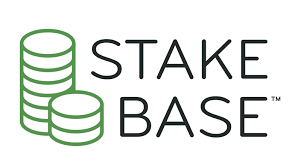What is Blockchain technology? Is it “the next big thing”? Are you missing out on a once in a lifetime opportunity when some startup wants you to invest in thier blockchain based venture? Well stick around, in this episode of Crypto Whiteboard Tuesday we’ll answer these questions and more.
welcome to Crypto Whiteboard Tuesday where we take complex cryptocurrency topics, break them down and translate them into plain English. Before we begin, don’t forget to subscribe to the channel and click the bell so you’ll immediately get notified when a new video comes out.
Today’s topic is the Blockchain and the exciting world of blockchain technology. Hopefully by the end of this video you’ll understand exactly what blockchain technology is and why it’s really hard to seperate it from Bitcoin.

Before we understand how Blockchain technology works, we need to understand what problems it was designed to solve, so let’s take a step back and let me ask you a question… How do we tell if something is fake or real in today’s world? For example, a dollar bill, a driver’s license or a vote in the election.
How do we determine whether it’s valid or not? The answer? We keep a record of it. For example, each dollar bill has a serial number that is recorded by the bank. Your driver’s license number is recorded by the DMV and voting records are used to track who voted and who didn’t, so the same person won’t be able to vote twice.
Whenever you want to verify that a document is legit, you just look it up with the relevant authority. We even have Notaries, people who are licensed by the government to act as witnesses to attest and record the validity of pieces of information or identities.
You’ll notice there’s one thing that all of these mechanisms have in common – they are all centralized, which means there’s a central authority, whether it’s a bank, state office, or person that has the power to issue and validate information.

These central authorities have a lot of power, and as you know power may sometimes corrupt. So what happens if one of these authorities wants to change the facts or even maybe change history a little bit? This my sound far fetched, but even our world history is just a record kept by historians in a centralized manner.
The phrase “History is written by the victors” tells us that facts can sometimes be distorted by those in power. If you don’t think that’s possible, here’s a real life example. Today, most money is just a record of who owes what to whom.
Due to the subprime crisis in 2008, almost a thousand companies in the US received over 630 billion dollars that never existed before. Other companies had debts completely removed. Some would argue this bailout was justified, but you can’t deny that someone decided to change the records of how much money was owned and owed.
This is why Bitcoin was born. It was the first form of money that removes the need for a central authority. Its records are kept by everyone, not just by central banks. And when everyone is keeping track and verifying the facts, well, that means that you can no longer change the ledger of transactions whenever something doesn’t add up or because it’s more convenient.
You actually have to start being accountable. But money isn’t the only place where decentralization can play a role. Do you remember those big encyclopedia books we used to rely on when it came to research? Encyclopedia Britannica employed a hundred full time editors and over 4,000 contributors to publish what we considered to be the authority on knowledge.
Just imagine the power the editors of these books had in deciding what was worth mentioning, condemning, condoning or ignoring. Well, the last volume of encyclopedia Britannica was published in 2010.
Today, information is much more decentralized with over 130 thousand active editors that maintain different Wikipedia pages. The risk of any of them “going rogue” unnoticed is much smaller since each edit is public and can be verified by anyone.
Decentralization reduces the risk for corruption, fraud and manipulation. Blockchain technology is a new and innovative way to implement decentralization. In a nutshell, Blockchain technology is a solution for the problem of centralization.
It’s a system for keeping records by everybody, without any need for a central authority – a decentralized way of maintaining a ledger that is practically impossible to falsify. I mean, when so many eyes are watching and verifying everything that’s being done, it’s really hard to break the rules unnoticed.
You might be wondering why is it called Blockchain? Well, imagine we’re maintaining a shared ledger with many pages of records. Each page begins with a sort of summary of the page before it. If you change a part of the previous page, you’ll also have to change the summary on the current page.
So the pages are actually linked, or chained together. In technological terms, pages are called blocks. And since each block is linked to the data of the previous block, we have a chain of blocks, or a blockchain.
Many people think that Satoshi Nakamoto, the mysterious inventor of Bitcoin, created Blockchain technology. Technically he only created the first real life implementation of it – Bitcoin. In fact, that word blockchain is never even mentioned in Satoshi’s original whitepaper.
The closest he comes to saying Blockchain is “chain of blocks”. Now that you know what blockchain technology is, we still have two major questions to answer – how does it actually work, and is blockchain going to change our future? Let’s start with the first question.
Another way to ask this question would be – how do I create a system that allows the creation, verification and updating of records by everybody? Well, there are four elements a blockchain needs to actually have a life of its own.
The first thing required to support a blockchain is a peer-to-peer network – A network of computers, also known as nodes, that are equally privileged. It’s open to anyone and everyone. This is basically what we already have today with the Internet.
We need this network so that we will be able to communicate and share with each other remotely. The second ingredient is cryptography. Cryptography is the art of secure communication in a hostile environment.
It allows me to verify messages and prove the authenticity of my own messages, even when malicious players are around. We need cryptography because of the first element. Remember, I said anyone can participate in this network – including bad actors.
It’s great that I can communicate, but I also need to make sure my communication comes through unaltered. The third element is a consensus algorithm. You can switch the technical word “algorithm” with the word “rule”.
This means we need to agree about rules on how we add a new page, also known as a block, to our records. There are many types of consensus rules, in Bitcoin’s case we use a consensus algorithm known as Proof of Work.
This algorithm states that in order for someone to earn the right to add a new page to our ledger they need to find a solution to a math problem, which requires computational power to solve. Computers around the network run calculations to solve the math problem and in doing so, consume a lot of energy.
In other words they do a lot of work. That’s why when one of them finds the number that solves the problem and displays it to the network, they’re basically displaying a “proof of work”. Think of it as the node’s way of saying: “Hey, I spent quite a bit of energy here in solving this problem first, so I’m entitled to write the next page”.
As I mentioned before, there are other consensus algorithms that don’t require so much energy, this is just the algorithm type that the Bitcoin blockchain employs. There are pros and cons to different algorithms, but in order to run a decentralized ledger you’ll need to choose one, otherwise it will be really hard to reach a consensus with so many people in the network.
Finally, our last element is punishment and reward. This element is actually derived from game theory and it makes sure that it will be in people’s best interest to always follow the rules. So far, we’ve set up a network that has a way to communicate securely, and follows a set of rules for reaching consensus.
Now we’ll glue these elements together by giving a reward to people that help us maintain our records and add new pages. This reward is a token, or coin, that is awarded each time a consensus has been reached and a new block is added to our chain.
On the other hand, bad actors who try to trick or manipulate the system will end up losing the money they spent on computational power or their coins can be taken away from them. In the end, the important thing to remember is that the punishment and reward system works on psychological behaviour.
It turns the rules of the system from something you need to follow into something you’ll want to follow, since it will be in your best interest to do so. This was just a very high level explanation of what a blockchain consists of.
If you want to dig a little deeper into this process, check out our video on Bitcoin mining, part of our 7 day crash course on Bitcoin. So there you have it, the four elements for creating blockchain technology – a peer to peer network, cryptography, a consensus algorithm and punishment and reward.
However, there is a fifth element, that can’t really be synthesized… market adoption. I mean, we can have a group of five people sharing a ledger with a consensus algorithm but it doesn’t really make it decentralized, since not enough people are a part of the system.
Moreover, if there’s no adoption, there’s not really any value to our coin and the fourth element of punishment and reward isn’t very effective. Only once you achieve critical mass in the number of users, does a blockchain become truly decentralized and therefore immutable.
And at that point, the coin of that blockchain usually begins to appreciate in value. It’s hard to say what triggers mass scale market adoption. In Bitcoin’s case things actually started through use on the dark web, where people used Bitcoin to pay for drugs and other illegal stuff.
But since then, more people have begun to research Bitcoin and blockchain, and have seen the benefits they offer; either in practice, or as an investment. So there you have it, the five elements of a truly open, public, decentralized blockchain.
Up until today there are only a handful of blockchains that have over 1,000 truly independent participants, and as such can be considered as decentralized – Bitcoin, Ethereum and Monero to name a few.
If you’re thinking that it sounds like a lot of hard work to put a blockchain in motion, you’re absolutely right. But this is where Ethereum comes in. Ethereum is a Do It Yourself blockchain where all of these five elements are already in motion.
All you need to do is build the right solution on top of it. But that’s a whole different whiteboard episode you can check out later on. Now let’s move on to another term you may have heard – a private, or closed blockchain.
This term refers to companies that screen and limit the players who can participate in their blockchain. It’s a bit like how the Internet, which is open to everybody and anybody, is different from an Intranet – an internal network of company computers.
While I assume some companies will find value in running private blockchains to improve their internal processes, it’s far from anything exciting inasmuch as it has nothing to do with decentralization.
To emphasize this a bit more let’s compare open, public blockchains to closed, private ones. A public blockchain is open to everybody, it’s transnational and borderless. It’s censorship resistant, and it doesn’t require any 3rd party.
It’s also neutral – there’s no such thing as a “good”, “bad”, “illegal” or “legal” transaction, there’s only a “valid” or “invalid” one. A private blockchain on the other hand, is limited to authorized participants only, and it’s governed by a handful of entities.
In the words of Andreas Antonopoulos, in most cases of private blockchains you don’t really need a blockchain, you can just share a spreadsheet between the participants. The whole idea of blockchain was to decentralize a process through the general public, and that’s exactly the opposite of what a private blockchain does.
The features of a public blockchain, on the other hand, create enormous benefits. There’s no single point of failure. The records are immutable, also known as tamper proof. And finally, it’s censorship resistant so you can’t really remove a record or stop it from getting published – as long as it follows the consensus rules.
Before we end today’s lesson we still have one major question to answer – Is blockchain technology the next big thing? I assume you may have heard of different startups that are using blockchain technology to solve some sort of a problem.
In most cases when I hear of such a company I ask two questions: First, are they using a public or private blockchain? Since if they’re not using a public blockchain there’s not really anything very disruptive here.
Second, do they even need a blockchain? If you remember in the beginning of this lesson, we talked about the dangers of centralization. But these dangers are only meaningful if there’s a lot at stake.
For example, the queue to the pharmacy is managed in a centralized manner but I don’t really care since there’s not a lot at stake and it’s actually more efficient that way. Blockchain technology is very good at decentralizing, but it’s also very inefficient, slow and energy consuming.
For example, Bitcoin’s network takes 10 minutes on average to confirm a transaction. Not the ideal waiting time for buying a cup of coffee at a 7-11. The only reason to choose Blockchain technology as your solution is if your problem is actually centralization.
If you don’t need to decentralize something, you probably don’t need to use blockchain technology and are better off with some centralized solution. In fact it will probably work better. To sum it up, Blockchain technology is truly disruptive, but at the moment only a handful of use cases really require it.
So the real question is this: at the current moment, is our world ready for more complex blockchain implementation than what Bitcoin already offers? In the early 2000s, there were a lot of Amazons, Googles and Facebooks that never caught on for the changes they presented.
.. Today, many of these blockchain startups face the same fate. That’s it for today’s episode of Crypto Whiteboard Tuesday. Hopefully by now you understand what Blockchain technology is – an open, censorship resistant method for managing records by everybody, hence making them practically impossible to falsify.
It’s a solution to the problems centralization presents. I also hope that whenever you hear the term “blockchain technology” in the future you’ll know to take it with a grain of salt and ask the right questions.
You may still have some questions. If so, just leave them in the comment section below. And if you’re watching this video on YouTube, and enjoy what you’ve seen, don’t forget to hit the like button.
======================
All Things BlockChain Innovation is here to help you understand and participate with the changing World. While you may not be familiar (yet) with the BlockChain, we are working to add amazing programs, services and products that are moving into the inevitable future of BlockChain.
Cryptocurrency Mining: While you can go “all-in” and become a Cryptocurrency Miner. You can learn about mining for BTC, ETH, or any of the various Cryptocurrencies. Or you can literally follow the easiest system to date by joining in our Mining Community to turn your non-used time and resources on your personal computers into Micro-Mining machines allowing you to earn BTC (Bitcoin). Start earning Cryptocurrency Here:
Get Paid to Chat: We have the most incredible and more secure Chat program in the World. This is the most incredible and global solution. And it pays in Crypto. Free to use, get paid to use it. Go here to become a part of Crypto Payments and Rewards:
Get Paid to Game: Crypto Gaming is here. Enjoy and connect to the World’s most popular and entertaining “Latest and Greatest” Games. Earn Crypto as you Game. The more you Game, the more you Earn. See the details here:
Travel (everything travel related) on the blockchain: You can definitely say that you saw this here first. We were the first to jump on-board with this travel phenomenon. Remember when the Internet changed Travel forever. Well it is happening again on the blockchain and we have it first. Get going with Decentralized Travel here.
STAKEBASE the Cryptocurrency Exchange for Vetted Cryptocurrencies that utilize Staking.This is another Disruptor and Revolutionary program backed by the Blockchain. Proof of Stake and Efficiencies in Crypto are here and building the future. See the way Crypto was meant to be for all when you get involved and connected with STAKEBASE. See it all Here:
For more education keep up to date as we update and add to this Category Page. These updates and new services are not only going to make things in life better; but can provide a way to share in the incomes they allow investors small and large.










